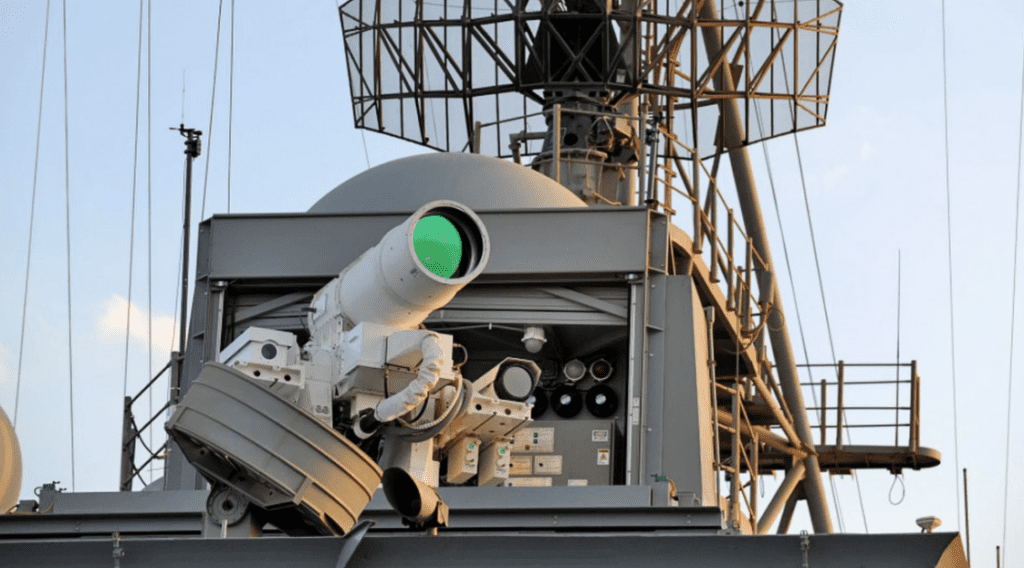The world’s first operational laser weapon will be protecting US Navy ships from drone attacks, other vessels.
Something named the (arguably not very creative) Laser Weapons System, or LaWS for short, may seem to be pulled out of the realm of hard sci-fi, but it’s actually very real. The weapon is entirely functional and fully capable of shooting down rapid targets such as drones. LaWS is currently deployed aboard amphibious transport ship USS Ponce in the Persian Gulf, the US Navy told CNN.
“It works just like a laser pointer,” explained Lt. Cale Hughes, one of the officers operating LaWS, for CNN.
“There’s a chamber inside with special materials that release photons.”
Somewhat like your average laser pointer, the LaWS beam is invisible and completely silent. Similarly, it also travels at the speed of light, some 300,000 km (186,000 miles) per second. What sets it apart from your run of the mill laser pointer is what happens when the beam hits something. Instead of a harmless red point on a powerpoint slide you’re not going to pay attention to anyway, the LaWS’ beam will heat a target to thousands of degrees in a fraction of a second, turning it into a fireball that’s guaranteed to capture your full attention.
It’s also quite cheap on a ‘per pop’ basis. The whole system costs a bit over US$40 million, needs a crew of three, a small generator for power, and will destructify stuff for “about a dollar a shot,” according to Lt Hughes.
Its prey includes airborne threats as well as water-borne foes. Because it’s so accurate, the US Navy hopes that the weapon will help keep combat casualties low on both sides. For example, when engaging a boat, the LaWS can pinpoint the engine and disable it, something conventional weapons can’t do as they tend to cause quite a lot of collateral damage.
Which comes in very handy as the rules set down at the Geneva Conventions preclude armed forces from using laser weapons directly against people, Optics.org reports. Limiting collateral damage will allow navy forces to abide by that protocol, Rear Adm. Matthew Klunder, chief of naval research, said in 2014 at a news conference in Washington, D.C.
Now, work is underway on second-generation laser weapons systems which could be used against even more varied targets.










